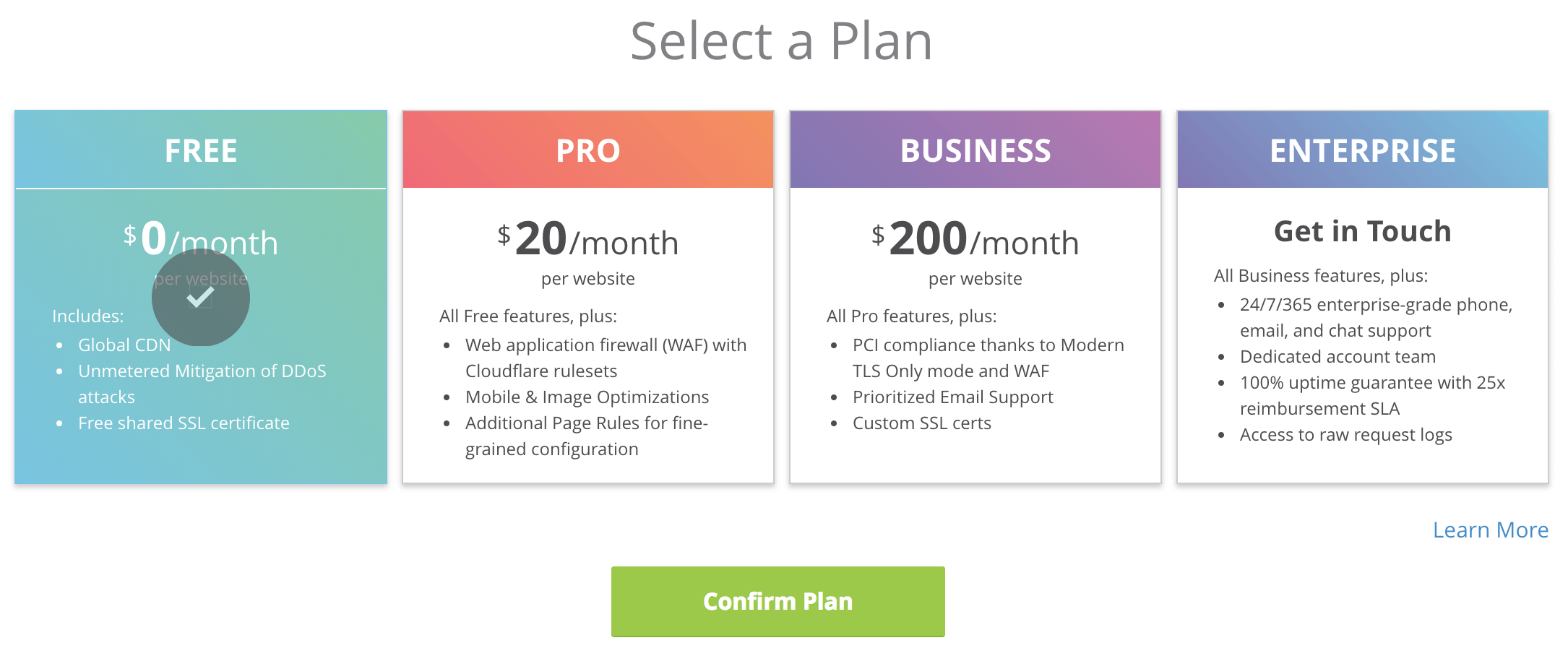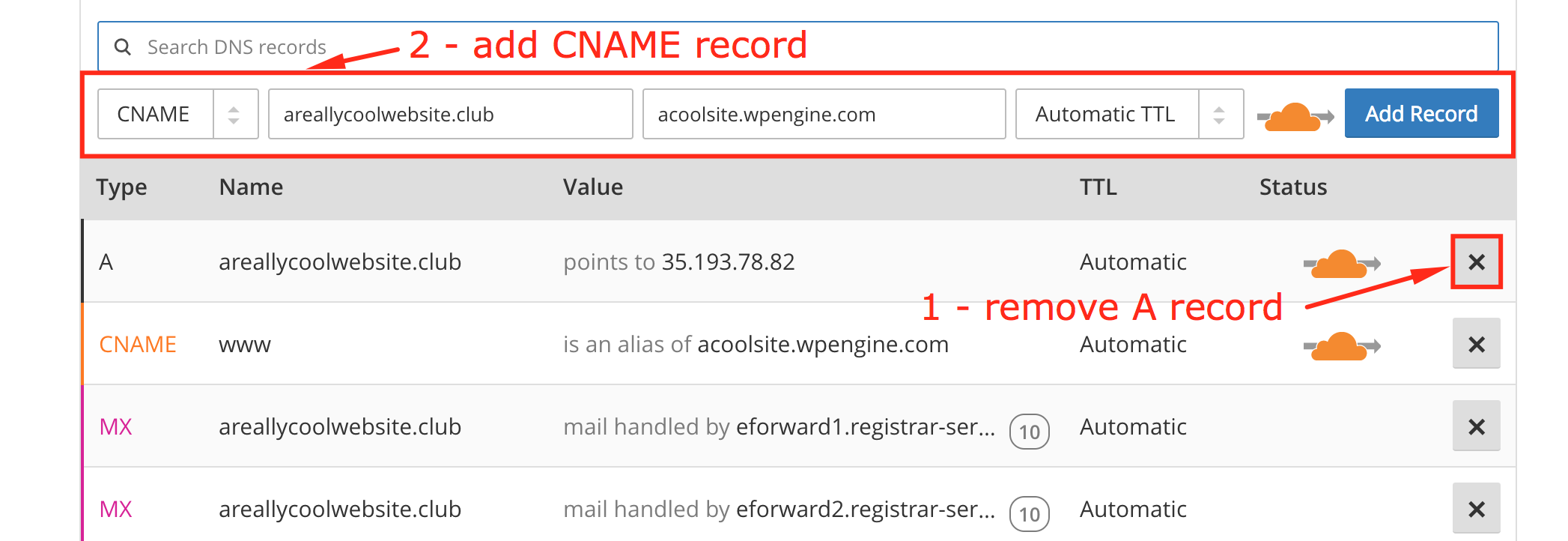Point Namecheap DNS to WP Engine
If you are using Namecheap as your DNS provider, you can use the instructions in this article to configure your DNS records to point to WP Engine. This step is required in order to go live with your new website on WP Engine.
NOTE: Before taking these steps, be sure to add your domain in User Portal.
Locate your DNS settings in User Portal
The first step is to locate the CNAME and IP Address settings located in your User Portal. You will find these settings on the Overview page.

Make note of these settings, and leave this tab open for easy copying in the next steps!
Log in to Namecheap
Next, login to your Namecheap account at www.namecheap.com. Upon login you should see a list of your domains. Next to the domain you wish to point to WP Engine, select “Manage” from the dropdown menu.

Then, select “Advanced DNS” from the top navigation. You will be taken to a list of records.
Update DNS Records
Now it is time to plug in the settings from the WP Engine Overview page into your Namecheap settings. Before doing this, it’s time to make a choice:
- Option A (preferred): point your nameservers to Cloudflare. If your site is migrated internally with WP Engine, DNS changes won’t be needed.
- Option B (still okay!): point your A record to WP Engine. This will work just fine, but you will need to update your DNS records if your website is ever migrated to a new server. This method keeps your Domain and DNS management at Namecheap.
Option A: Point Nameservers to Cloudflare
Cloudflare is a service that helps manage your DNS. It has the added benefit of configuring CDN, SSL, and even DDoS protection on some plans. Before continuing, at this point you should open a new tab and navigate to www.cloudflare.com. Here you can sign up for a free account to get started. Enter your domain name when prompted.
Then, Cloudflare will automatically look up your DNS records. Select Next and choose the plan you want (we will use the free option in this example).

From here, Cloudflare will import the settings from Namecheap for you automatically. In this screen, remove the existing A record for your domain. Then, add a CNAME record using the CNAME in the Overview page of your User Portal.

If your “www” record here is an alias of your domain or your WP Engine CNAME, you can leave it as-is. If it points to an IP address as well, you will need to perform the above steps for this record too.
Now you will be prompted to change your nameservers. This step will be performed at Namecheap. Cloudflare will show you two nameservers to change–leave this tab open so you can easily copy them!
In the dashboard for Namecheap, first select Domains list then Manage next to your domain name. Scroll down to the Nameservers section and from the dropdown select CustomDNS. Enter the nameservers provided by Cloudflare.
After doing this, click Continue back in the Cloudflare pane. The nameserver settings may take some time to change over. After this point, the Cloudflare settings will kick in, automatically pointing your DNS to WP Engine with the CNAME record we configured earlier!
In the meantime, be sure to read over our Going Live guide to ensure you haven’t missed any key steps. To learn more about Cloudflare’s other services like CDN and SSL, head to Cloudflare Best Practices.
Option B: Point A Record to WP Engine
If you prefer to not use Cloudflare for DNS, not to worry! You can still configure your DNS settings right through Namecheap’s dashboard instead. Remember: with this option, if your site is migrated to a new server, updating your DNS records will be required.
To point your Namecheap DNS to WP Engine, edit your @ record first. We will be pointing it via an A Record to the IP address showing in your Overview page at WP Engine. You can also edit the “TTL,” which is the time to propagate the change. In my example I have set the TTL to 5 minutes.
Now edit the “www” record. For “Type,” select CNAME record, and select to point it to your CNAME from the Overview page on WP Engine. When finished your DNS records should look similar to the image below:

Once you have saved your DNS records, all that’s left to do is to wait for propagation! After that, your DNS will successfully be pointed to WP Engine.
NEXT STEP: See our Going Live guide to ensure you didn’t miss any important steps.
